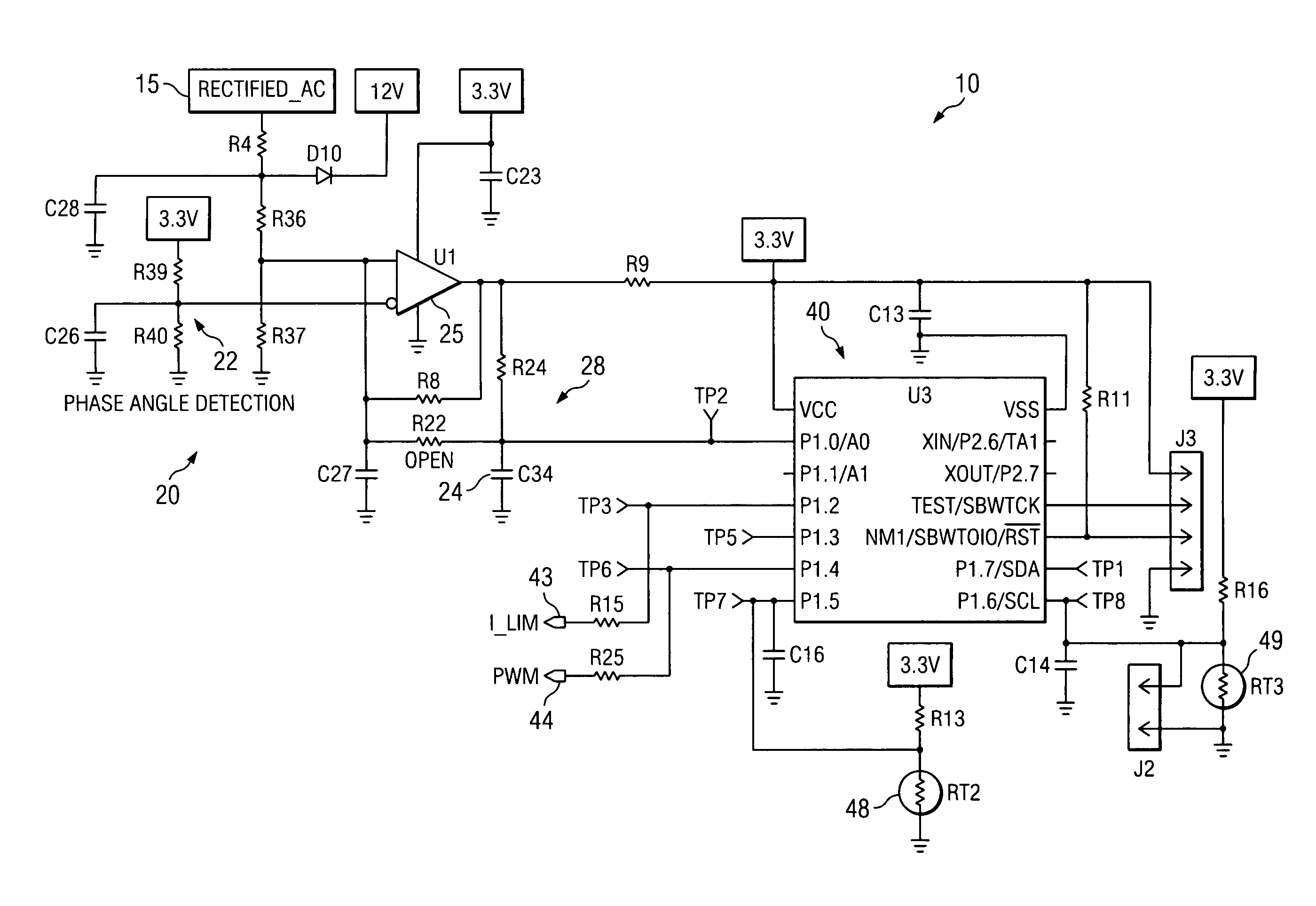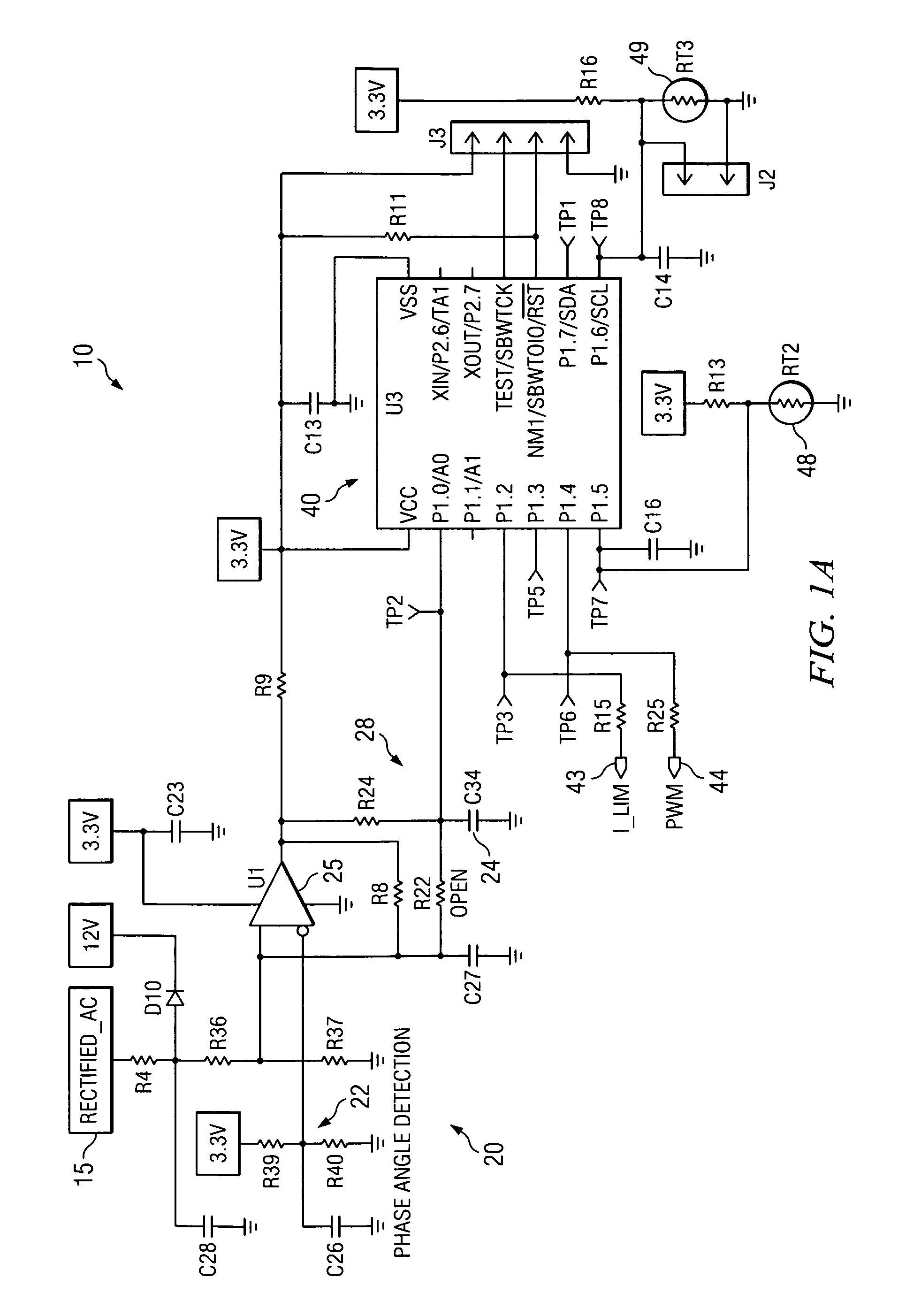AC-powered, microprocessor-based, dimming LED power supply
a technology of led power supply and microprocessor, which is applied in the direction of ignition automatic control, process and machine control, instruments, etc., can solve the problems of large input and/or output storage capacitance devices, high cost and space consumption, and undesirable use in many applications, so as to improve the audible noise level generated by the triac-dimming circuit, the effect of reducing the 120 hz audible nois
- Summary
- Abstract
- Description
- Claims
- Application Information
AI Technical Summary
Benefits of technology
Problems solved by technology
Method used
Image
Examples
Embodiment Construction
[0019]An illustrative schematic diagram for a phase-control, PWM-based dimming circuit 10 is shown as FIG. 1. The dimming circuit 10 provides power to a light source(s) 80 and includes a phase-angle detection circuit 20, a controller power supply 30, a controller 40, a power stage 50, a dv / dt filter 60, an optional output filter 70, and an optional slope compensation circuit 90.
[0020]Although the invention will be described in connection with a TRIAC, those of ordinary skill in the art can appreciate that proportional-current PMW-dimming control can also be accomplished using an integrated gate bi-polar transistor (IGBT).
Phase-angle Detection Circuit
[0021]The phase-angle detection circuit 20 is structured and arranged to sense input voltage (VIN) from a conventional, phase-controlled 120 VAC, 60 Hz power source 15, such as a standard AC outlet, and to provide a filtered, DC pulse signal to the controller 40 that is based on the sensed input voltage and pseudo-representative of the i...
PUM
 Login to View More
Login to View More Abstract
Description
Claims
Application Information
 Login to View More
Login to View More - R&D
- Intellectual Property
- Life Sciences
- Materials
- Tech Scout
- Unparalleled Data Quality
- Higher Quality Content
- 60% Fewer Hallucinations
Browse by: Latest US Patents, China's latest patents, Technical Efficacy Thesaurus, Application Domain, Technology Topic, Popular Technical Reports.
© 2025 PatSnap. All rights reserved.Legal|Privacy policy|Modern Slavery Act Transparency Statement|Sitemap|About US| Contact US: help@patsnap.com



